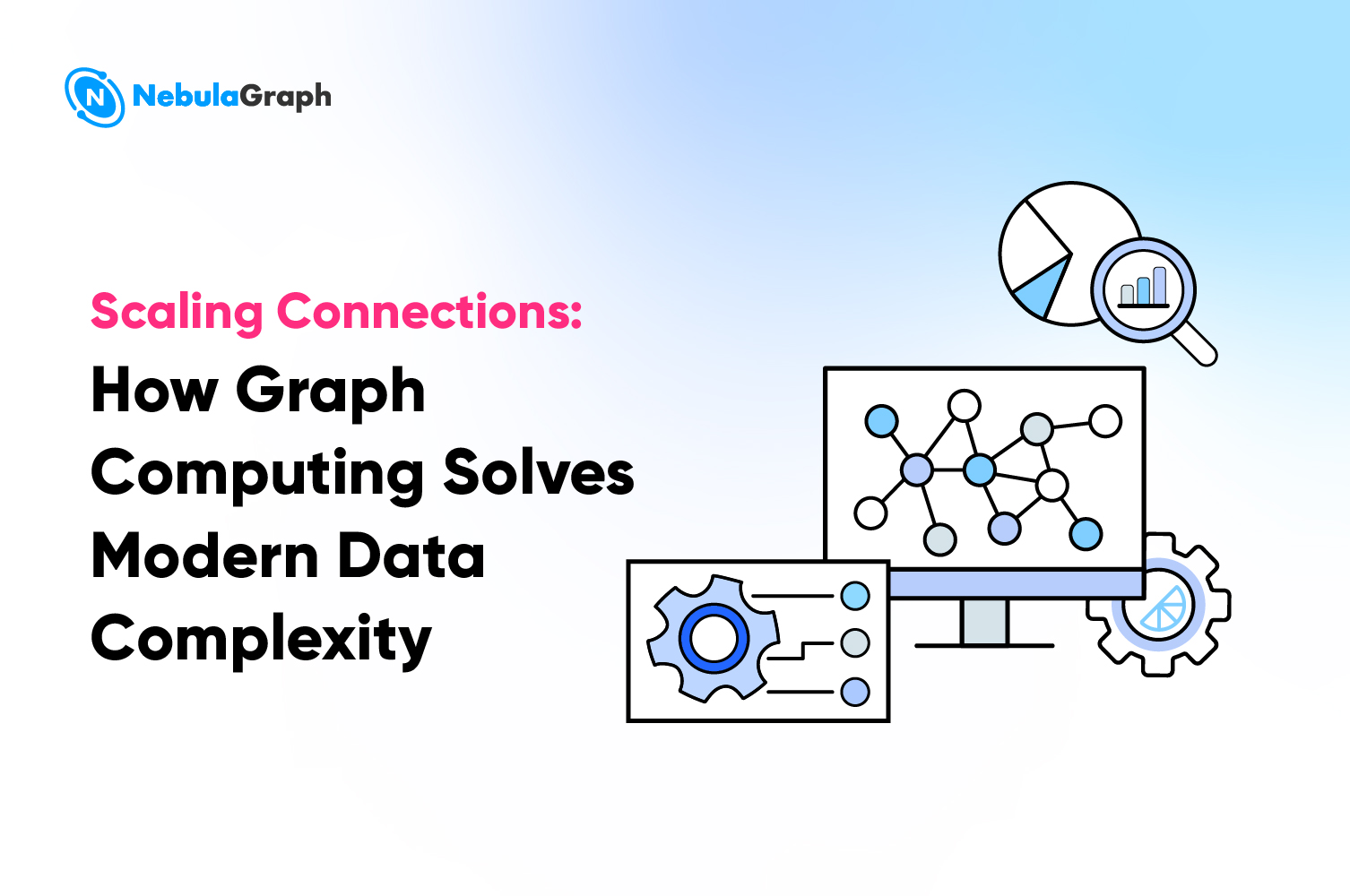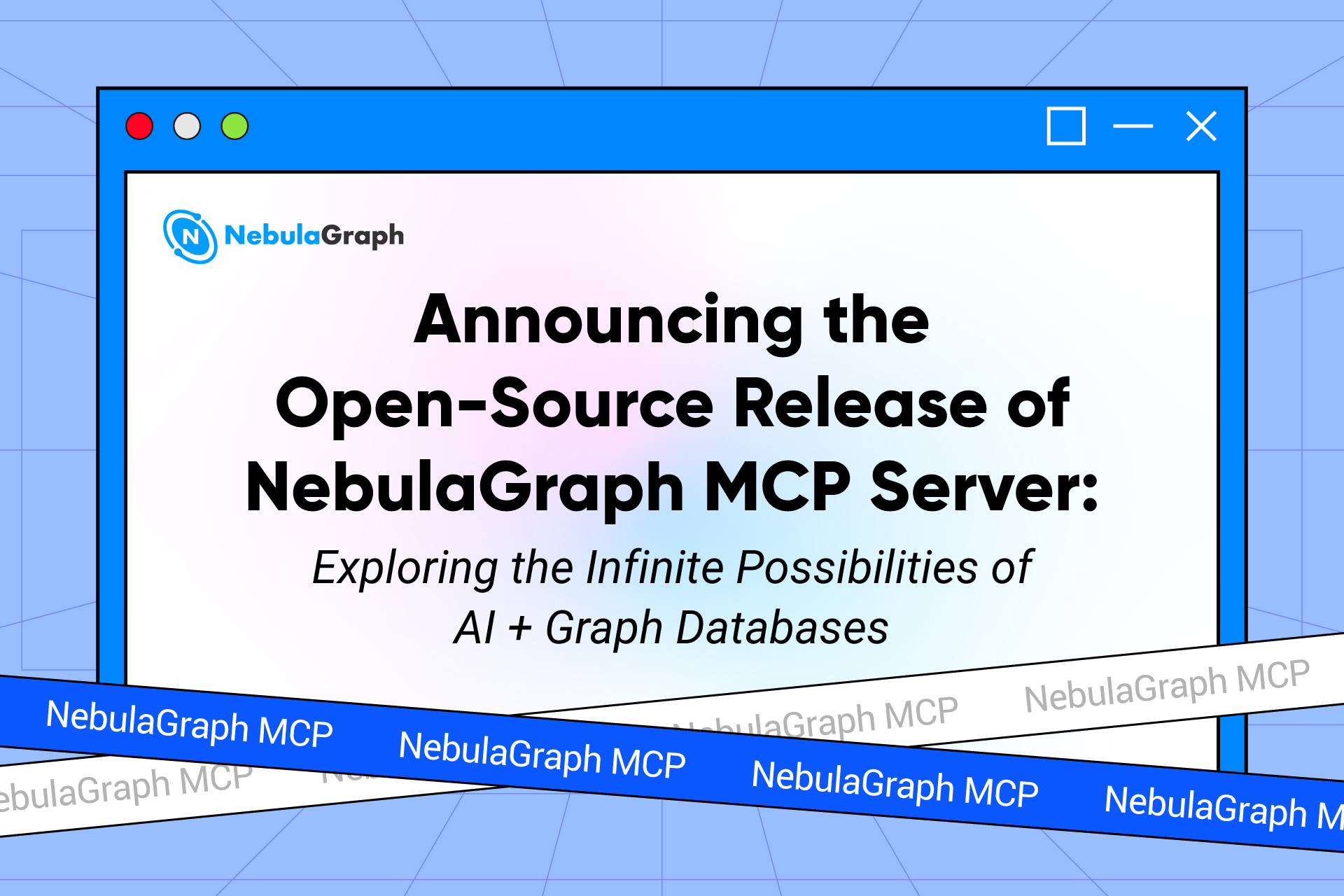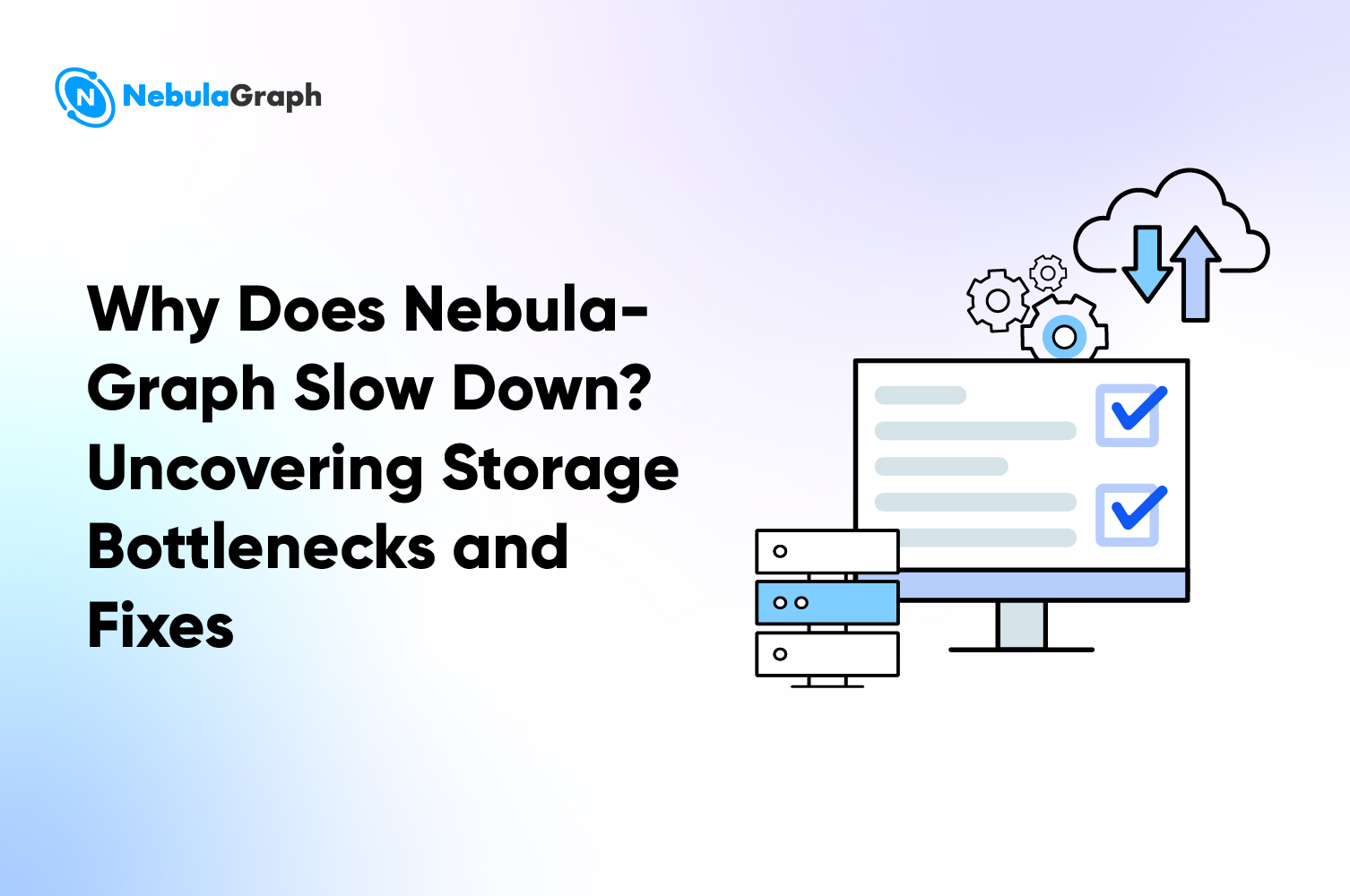Performance
Amazon Neptune vs NebulaGraph
Since the 80s, graph databases have been gaining popularity in various fields such as data analytics and other areas. However, in the last 20 years, we have seen a sudden increase in demand for graph databases due to the need for fast and powerful data-handling systems.
In 2023, the graph database market was valued at $2.9 billion. With more users adopting these databases; the market value is expected to grow to USD 7.3 Billion by 2028.
As you can expect, the need for these infrastructures has seen many players venture into the market. Among the many vendors, Amazon Neptune and NebulaGraph are some of the top considerations. A thorough comparison of the two will help you pick the most suitable for your task.
Amazon Neptune and NebulaGraph Overview
These two databases are popular and boast great power and other amazing features. In this overview, we explore each in brief.
Amazon Neptune
Amazon Neptune is designed and hosted by Amazon Web Services. Amazon Neptune is a managed database with high integration ability with other Amazon Web Services. It uses the Amazon Neptune Analytic engine to enable super-fast data look-up and analysis with minimal latency. The built-in algorithm, in-memory computing and vector search ensure that the database can perform billions of processes per minute, hence quick results.
- In terms of schema, Amazon Neptune is schema-free
- For access management, you can define access rights through AWS IAM
- Neptune does not offer in-memory capabilities
NebulaGraph
NebulaGraph is another popular name on the market, a powerful open source graph database dedicated to storing, analyzing, and retrieving information from stored data. The database possesses amazing performance with super low latency, allowing it to achieve billions of queries per second. In addition to the open source option, NebulaGraph also offers an enterprise edition that comes with 24/7 support and professional consulting. Compare the plans.
NebulaGraph’s database architecture allows linear scaling, meaning it can continuously replicate as you add more resources. Due to its scalability and flexibility, NebulaGraph is mostly used by Fintech companies and large internet firms, among others.
- In terms of schema, NebulaGraph offers strong typed schema
- NebulaGraph uses role-based access control
- NebulaGraph offers in-memory capabilities
NebulaGraph is the only graph database solution that can host graphs that contain dozens of billions of vertices and trillions of edges. All this while still offering millisecond latency, high availability and robust security for your data.
Amazon Neptune Vs. NebulaGraph comparison: Development and Features Comparison
Although these databases are designed to deal with graphical data, they bear important differences in aspects such as the architecture, query language, and other qualities.
Let’s compare them on the following key items that should help you pick the right one for your use case.
In terms of release dates, Amazon Neptune entered the market in 2017, while NebulaGraph came 2 years later in 2019.
1. Database Developer
Amazon Neptune, as the name suggests, is developed and maintained by Amazon through Amazon Web Services.
On the other hand, NebulaGraph is designed by Vesoft Inc. The company is founded by engineers from top tech giants such as IBM, Alibaba, and Facebook among others.
Being open source with a good name behind it, NebulaGraph is easy to tweak to suit your needs. Also, it allows for high transparency and flexibility.
2. Querying Language
Unlike some years back when querying a database was an uphill task, graph databases are much easier to use as developers are crafting derivative languages to ease accessibility.
Both Amazon Neptune and NebulaGraph have their distinct query language(s). Amazon Neptune uses query languages like TinkerPop Gremlin and RDF 1.1 / SPARQL 1.1. This is because the database supports Property Graphs and W3C’s RDF graphs.
On the other hand, NebulaGraph uses the NebulaGraph Query Language (nGQL), an SQL derivative. nGQL is a declarative language, meaning you don’t need to specify every step. Once you tell the database what you want, it takes you there. Thus, it's an intuitive and easy-to-learn language. The language is simplified to give users simple utilization; thus, developers and operators can use it with ease. The release of NebulaGraph 3.0 enhanced the query language to support OpenCypher.
3. Licensing
NebulaGraph is an open-source graph database that also offers an enterprise version. Based on the open-source edition, the enterprise version has value-added features and support services that include 24/7 hours on-call.
Even though not modifiable, it is designed to work seamlessly. Also, the professional support and high flexibility offered by the organizations behind the software make them a great choice. Amazon Neptune is a commercial graph database.
4. Scalability
Well, when it comes to scalability, Amazon Neptune and NebulaGraph both offer this feature. Amazon Neptune has automatic scalability, where the storage and processing power increase automatically depending on your requirements. With the ability to grow your storage volume up to 128 TiB, it means more processing power even for complex tasks.
On the other hand, NebulaGraph’s distributed architecture allows horizontal scalability. This means that whenever the demand rises, all that is required is to add more servers without compromising on performance and stability.
Amazon Neptune Vs. NebulaGraph: Use Cases Comparison
Both graph databases have vast applications in different fields. While they are utilized in similar fields, the querying and general functionality are quite different.
Let’s compare the popular use cases below.
1. Fraud Detection
For both Neptune and NebulaGraph, relationships form the foundation for fraud detection. Since both can execute fast queries, it's easy to find relationships that point to fraud.
To create graph fraud detection solutions with Amazon Neptune, you start by loading data directly into Neptune. With the data now in Neptune, you can use Neptune alongside Amazon SageMaker to build machine learning models that can identify fraud.
Fraud detection with NebulaGraph is made easy with Nebula Explorer, which is a graph data exploration app that has been built upon the NebulaGraph database. You can load huge amounts of data and then query it with visualized graphs to visually identify fraudulent activities.
The key difference here is that while both graphs support loading and querying large-scale graph data, NebulaGraph goes a step further to enable visualization.
2. Social Recommendations
Both graphs can support recommendations of social networks. First, it’s always important to first understand the purpose of the social graph that you want to build so that you can build it right for the system that will eventually use it, such as CRM.
For both you will load the data, build the social graph, then use it to achieve different social functions.
For Amazon Neptune, you can expose the graph data to external systems using the Amazon API Gateway. It's also capable of running interactive graph queries, which make it easy to equip applications with amazing social features. You can, for instance, build a social feed that prioritizes updates from people that users would be most interested in such as family members.
For NebulaGraph, again visualization is a distinct feature through the Nebula Explorer. You can visualize relationships and easily enable social actions such as new friend recommendations, finding common neighbors, feed generation, etc.
See how WeChat customized NebulaGraph to handle their large social datasets.
Also Read: Neo4j vs NebulaGraph vs JanusGraph
3. Knowledge graph
As may know, knowledge graphs have become popular in use cases such as chat robots, risk control in big data, and medical treatment, among others. This makes them very important.
Both graphs enable the building of knowledge graph applications. It means that these applications will support the storage of data in a graph model. Queries are then used to navigate the graph datasets.
Neptune being a managed graph means that you can host the knowledge graph on their managed service, making it easier to use.
NebulaGraph makes use of property graphs to store relationships. Scaling is made easier through separation of storage and computing architecture.
Through collaboration with renowned LLM teams worldwide, NebulaGraph is integrating LLMs with graph databases. Thanks to these efforts, NebulaGraph now supports Text2Cypher in a Graph + LLM first with the capability to translate natural language into graph queries. This revolutionary technology enables users to query knowledge graphs with the use of natural language via a dialogue interface. What this means is that companies will no longer need to invest in long learning curves to bring their developers or users to a level where they can extract meaningful insights from graph data. This creates the opportunity to create knowledge graphs from huge and complex data at a much lower cost. Get a first hand demo and see for yourself how to build and query a knowledge graph with the use of natural language.
4. Ecommerce recommendation engines
Recommendation systems have become popular in industries like eCommerce. It's all about recommending stuff to customers, be it products, services, games, content, etc.
Both Amazon Neptune and NebulaGraph support the building of recommendation engines by making it possible to store relationships. These relationships are then queried to provide real-time recommendations
Amazon Neptune relies on Graph Neural Network (GNN), which is a deep learning framework that can be used in graph data to perform prediction tasks at node level, edge level or even at graph-level. Algorithm implementation is achieved through Neptune ML.
In NebulaGraph, developers use NebulaGraph's query language (nGQL) to implement recommendation algorithms. These algorithms will consist of queries that identify patterns as well as relationships between users and items. Once you finish building the recommendation engine, you can use Nebula's APIs and connectors to integrate it with the eCommerce platform. See how to use NebulaGraph to design a recommendation engine.
NebulaGraph is also big on data visualization, which is key in building efficient recommendation engines. NebulaGraph Explorer is the tool that brings visualization to life. Developers use this tool in combination with NebulaGraph core to visualize massive interactions in graph data.
5. Network and IT Infrastructure Security
With Neptune's fully managed service, it's easy to execute fast queries. This makes it possible to detect the wrong access or exposed resources in real-time. You can also export the security graph data to tools such as Splunk to help you dig deeper into insights. Still on insights, the native integration of Neptune with Amazon OpenSearch Service can also come in handy.
When it comes to network security, NebulaGraph excels in protecting sensitive information and detecting potential threats. Through native storage and the shared-nothing architecture, NebulaGraph supports tracking the network and device paths. Any potential threats found can be responded to instantly.
The key difference here is that while Amazon Neptune focuses on making it possible to build security graphs that perform fast queries and analyze the data for insights, NebulaGraph is big on real-time tracking, finding potential threats and responding promptly.
Conclusion
From the comparison above, it is evident that these databases are powerful and offer amazing functionality.
Amazon Neptune is suited for use cases that lean more towards Amazon Web Services since it allows direct integrations with these services.
On the other hand, NebulaGraph provides amazing power in data analysis across the board.


